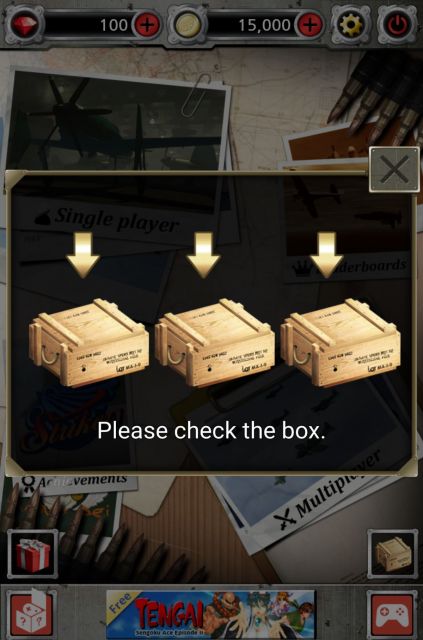

The options on the other hand, put two smaller planes that fly next to you and fire when you fire, effectively tripling your firepower.
#Strikers 1945 ending screen upgrade#
The firepower upgrade is pretty weak and hardly essential. If you can shoot down all of these planes, you receive extra points, and either a firepower upgrade or options. The goal is to shoot down as many enemies as possibly, which you are graded on at the end of each level.Įvery so often, a large group of red-colored enemies will fly in formation and taunt you. There are 32 levels in total, with very little variation in scenery beyond the blue expanses of the Pacific Ocean, making it feel rather long and visually repetitive. It is your mission to fly all the way from the United States to Japan, clear the way of enemy weapons so that the main fleet can get through, and ultimately destroy Tokyo. In 1942, you play as Super Ace, a plane that looks suspiciously like a Lockheed P-38 Lightning. Most English speaking gamers are only familiar with the first two (and its more recent HD sequel), seeing as 1941 was initially only ported to the SuperGrafx in Japan (although it shows up in various Capcom Classics Collections), and 19XX and 1944 did not receive console releases at all.
#Strikers 1945 ending screen series#
The series is generally known as either 1942, or 19XX, and is not to be confused with Psikyo's Strikers 1945, which rips of Capcom's series wholesale. Government secret weapons are all over the place including lasers, nuclear war machines, tanks and planes the size of buildings, and even alien technology. Compared to other shooters, they are more grounded in reality, although they quickly delve into sci-fi and fantasy elements as the series goes on, particularly with the ability to control lightning storms and tidal waves in the second installment, and technological designs far beyond the capabilities of 1940s technology. The third game is 1941: Counter Attack, the fourth is 19XX: The War Against Destiny, the fifth is 1944: The Loop Master, and the sixth (and most recent) is 1942: Joint Strike. The first is 1942, the direct sequel 1943: The Battle of Midway, with a revision called 1943 Kai. The naming conventions are slightly confusing, largely because the series does not run in date order. Indeed it was, and it launched the company's longest running shooter series. Many have noted over the years how unusual it was that a Japanese company would develop a game where they positioned their grandfathers as the bad guys, but given the burgeoning arcade scene in North America and Europe, decided it was worth it from a commercial standpoint. Its second shooter, 1942, went for a vaguely more realistic setting, putting you in the role of an Allied World War II fighter pilot fighting in the Pacific Theater. Capcom's first shoot-em-up was Vulgus, a typical overhead shooter with a typical science fiction theme.


 0 kommentar(er)
0 kommentar(er)
